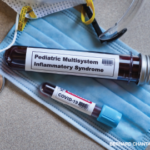In explaining the possible reasons for older age in MIS-C versus KD patients, Dr. Ravelli noted that younger children may be more protected than older children for several reasons: 1) an immune system better trained to fight viruses due to multiple recent vaccinations for other viruses, 2) crossover immunity from more frequent contact with other coronaviruses, 3) immaturity of the immune system, yielding lower susceptibility to creating a hyper-inflammatory reaction, and 4) lower expression of the ACE2 receptor, which has been implicated in the possible pathogenesis of COVID-19.
Ultimately, in Dr. Ravelli’s view, KD and MIS-C are on the same spectrum, with KD on the less severe end and MIS-C on the more severe end.
Ethnicity in MIS-C
Mary Beth F. Son, MD, an assistant professor of pediatrics at Harvard Medical School and director of the rheumatology program at Boston Children’s Hospital, discussed the interesting fact that although KD is more prevalent among Asian children, this group has not been overrepresented among children with MIS-C. This may, in part, relate to larger trends among children of different ethnic groups with respect to rates of SARS-CoV-2 infection.
In a cross-sectional study of 1,000 children tested at an exclusively pediatric drive-through and walk-up SARS-CoV-2 testing site earlier this year, non-Hispanic Black children had an adjusted odds ratio of infection of 2.3 compared to non-Hispanic white children, and Hispanic children had an adjusted odds ratio of infection of 6.3 compared with non-Hispanic white children.
The authors of this study noted that these racial disparities, which are also seen among adult patients, may be due to multiple causes, including structural factors, poorer access to healthcare, limited resources, and bias and discrimination.3
Among those children who do develop MIS-C, larger studies capturing clinical manifestations and outcomes are helping better characterize the spectrum of this condition. Dr. Son referenced a recent systematic review of 39 observational studies that included a total of 662 patients with MIS-C. Among these patients, 470 (71%) were admitted to the intensive care unit and 11 patients (1.7%) died. Mechanical ventilation and extracorporeal membrane oxygenation (ECMO) were used in 22.4% and 4.4% of patients, respectively.
Importantly, an abnormal echocardiogram was noted in 314 of the 581 patients (54%) who underwent this testing, with 45% demonstrating a depressed ejection fraction.4 Clearly, Dr. Son noted, the cardiac findings seen with MIS-C warrant a low threshold to include echocardiography in the workup of these patients.




